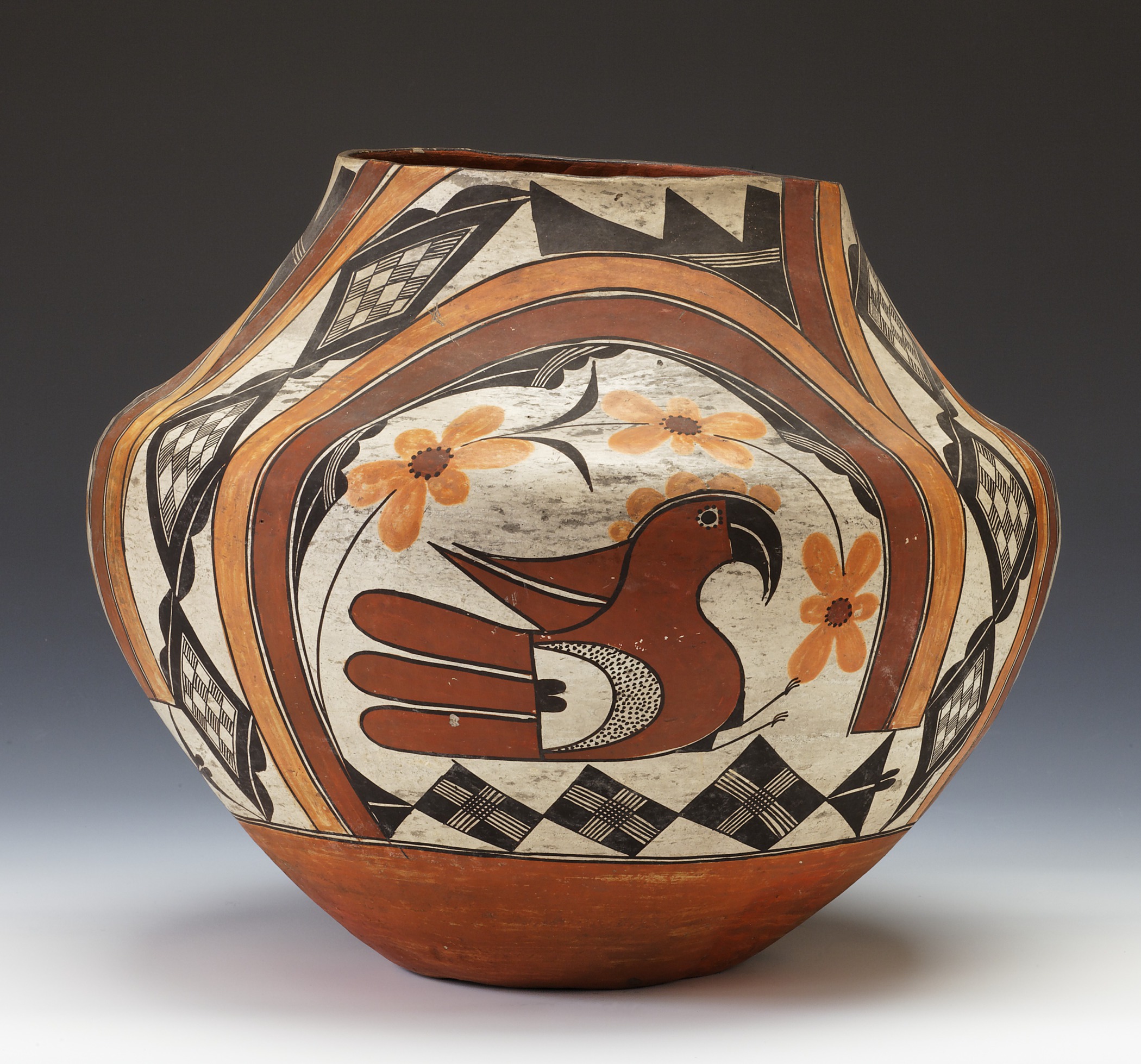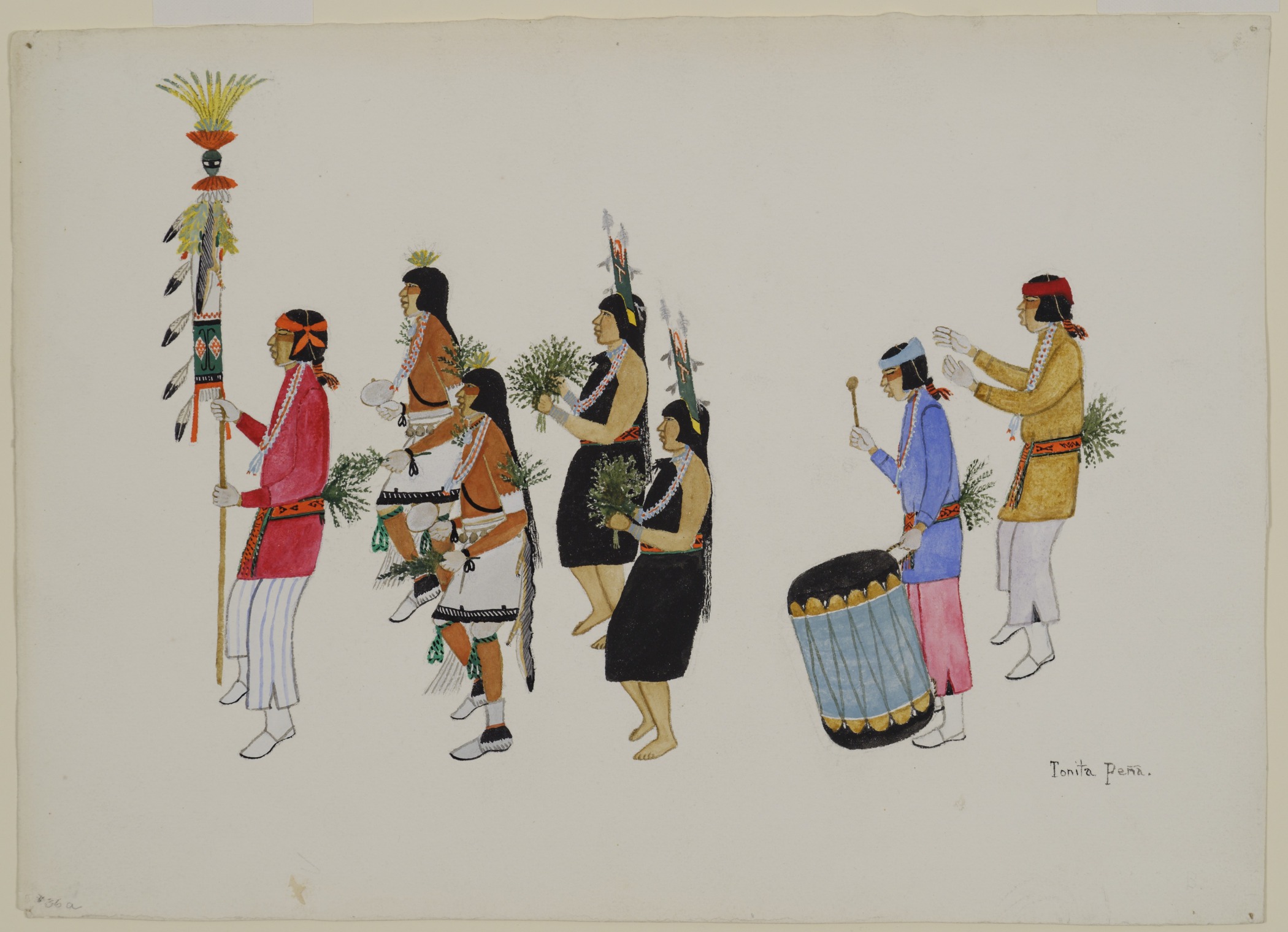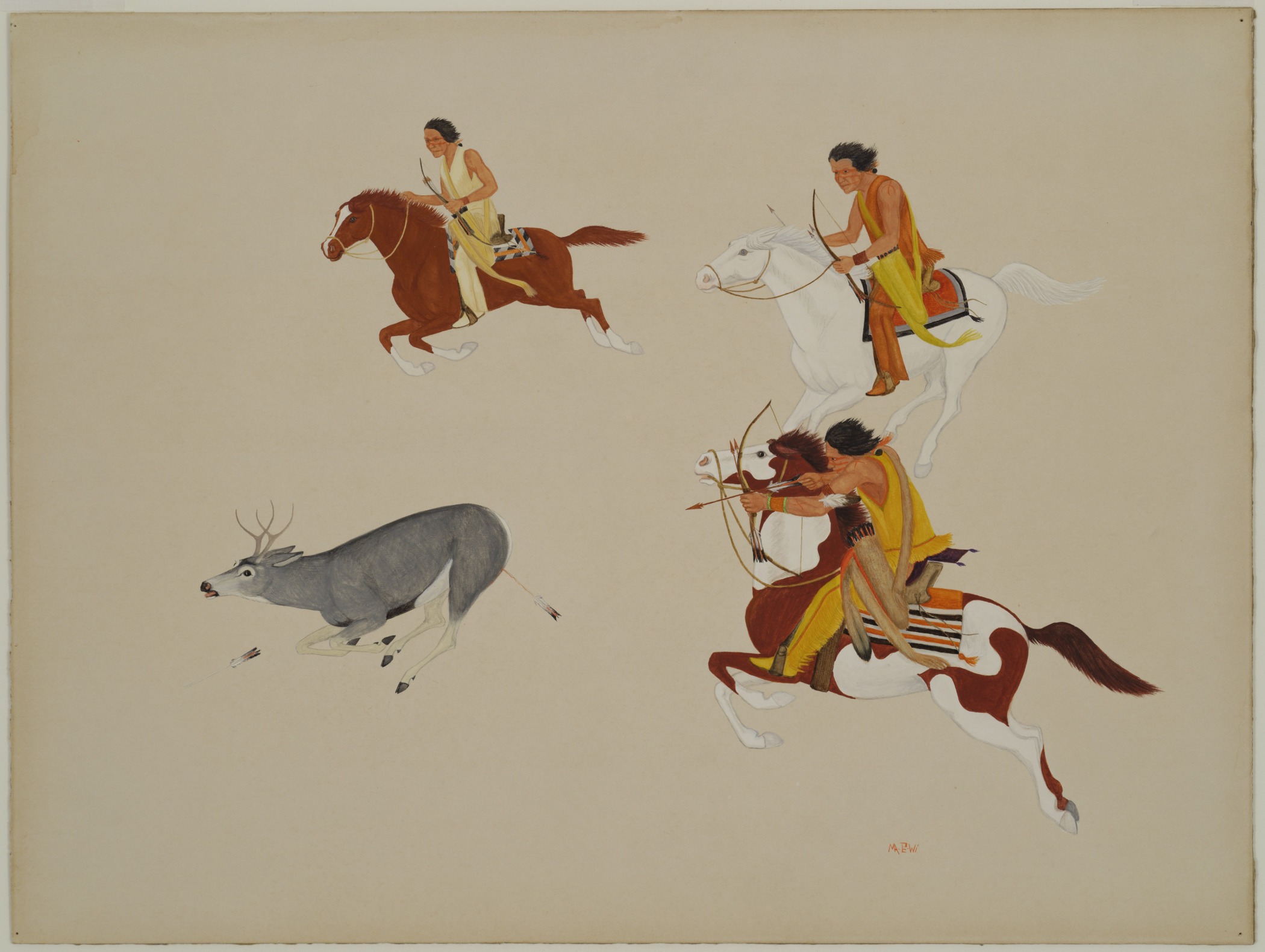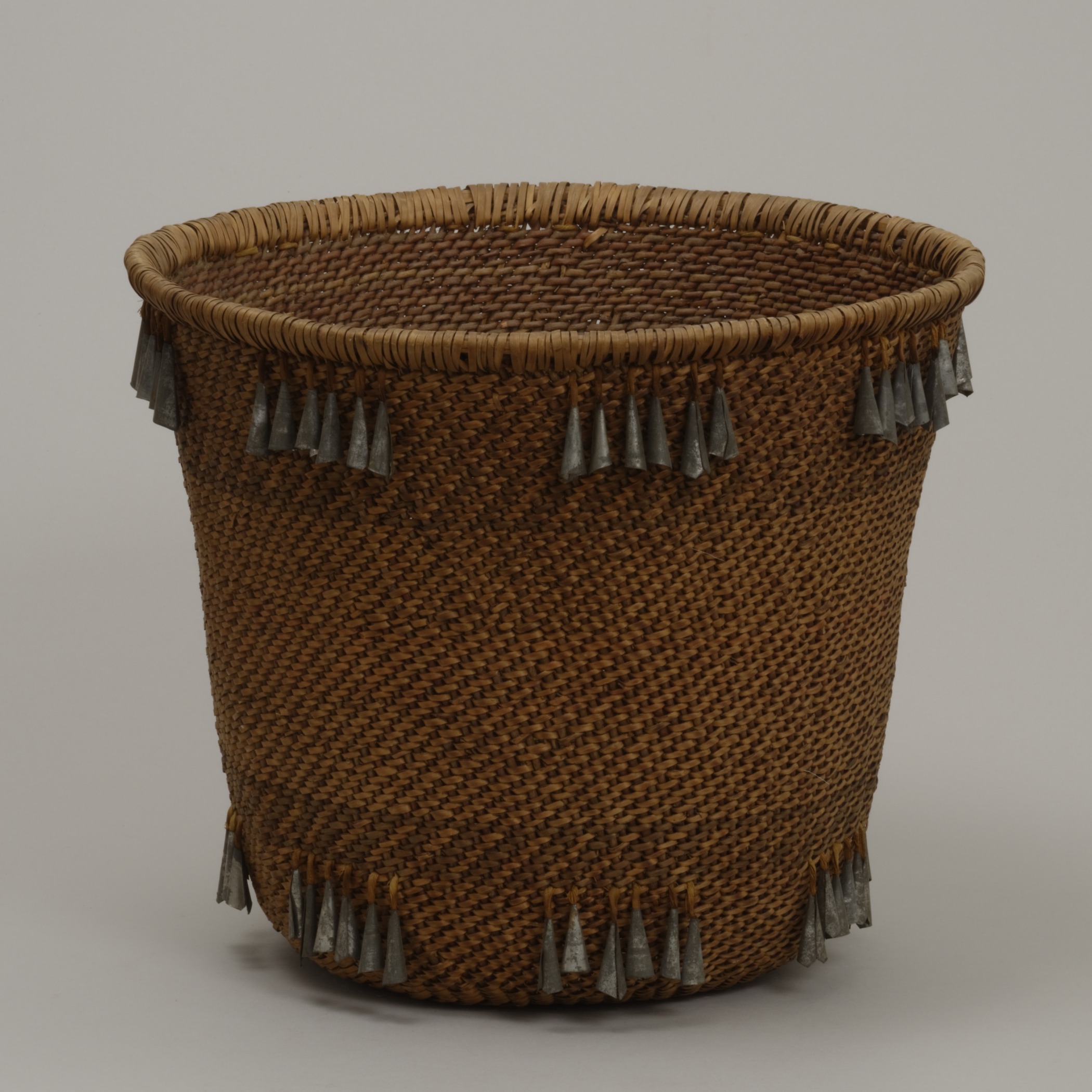Acoma Pueblo, New Mexico
Water jar (olla)
- About 1900
- Earthenware, painted with colored slips and burnished
- 10 7/8 × 10 15/16 in.
Hood Museum of Art, Dartmouth College: Bequest of Frank C. and Clara G. Churchill; 46.17.10077
visibilityLook & DiscussFor thousands of years, objects made of clay, stone, wood, and bone were the "hardware" of day-to-day life for peoples all over the world. Pottery, vessels made of fire-hardened clay, was used for everything from cooking to storage. This type of pot, known as an olla (OY-ya), was used in the Southwest to carry and store water.
explore the object
Acoma Pueblo
This pot was made by an Acoma Pueblo potter about 100 years ago. Acoma Pueblo refers to a people and the place they have continuously occupied for 800 years. The pueblo, or village, is situated on a mesa, an isolated flat-topped hill with steep sides about 365 feet above the ground. The Acoma once lived in this isolated spot to protect themselves from conflict with the neighboring Diné (Navajo) and Apache. There is no water on the mesa, so women who lived at Acoma had to go down off the mesa to get it. Large-size ollas were very important for making that trip. Women carried these vessels on their heads using one hand to grasp the shoulder of the vessel to steady it. Today, only about 30 people actually live in the village, while others live in the surrounding Acoma Indian Reservation.
Acoma artists are known for the fineness of their pottery. Dense local clay is dried and strengthened by the addition of pulverized pottery bits, or shards. The pots are shaped, painted, and fired at a very high temperature. They are very light, with thin, strong walls. Geometric and organic patterns are painted on with a brush made from the yucca plant and a mixture of mineral and vegetal paints. Many of the designs relate to water.
related works
In the Hood Museum of Art’s collection, there are many examples of ollas and storage jars from Southwest cultures. The following examples show how pottery from each culture is unique.
A:shiwi (Zuni), New Mexico, storage jar, late 19th century. Terracotta with pigment, 9 5/8 × 13 3/8 in. Hood Museum of Art, Dartmouth College: Gift of Heidi and Arthur Lewis Wood, Class of 1934; 987.61.26901.
Santa Clara Pueblo (Kha P’o), New Mexico, olla, collected about 1903–7. Blackened terracotta, 6 5/16 × 5 13/16 in. Hood Museum of Art, Dartmouth College: Bequest of Frank C. and Clara G. Churchill; 46.17.10043.
This storage jar (above left) was made by an A:shiwi (Ah-SHEE-weh) (Zuni) potter. The potter has used only white and brown slip, or glaze, to decorate the pot. It, too, contains imagery related to food and water. Alternating bands of birds and deer circle around the jar. The pattern around the neck of the pot represents curved wings. These wings and the birds in the band around the center are references to the rain bird. Deer were an important food source for the A:shiwi. The deer are drawn with an arrow entering their mouths and pointing inward. This “heart line” symbol represents the deer’s breath and life force. This pot was probably used by the A:shiwi themselves rather than sold to tourists. It shows wear around its base, where it was likely placed in the ground.
This olla (above right) was made by a Santa Clara Pueblo potter. It is similar in shape to ollas made by other Southwest cultures, but has a distinctive polished black surface. Santa Clara potters also molded shapes or carved into the clay rather than painting patterns on the surface.
Activity: Simple Coiled Pottery
Class Time: 20–30 minutes
This activity is designed to help students learn about the basics of building coiled pottery and to better appreciate the construction of pottery featured on this site.
learn more
Watch this video to see art historian Joyce Szabo discuss Pueblo pottery.






